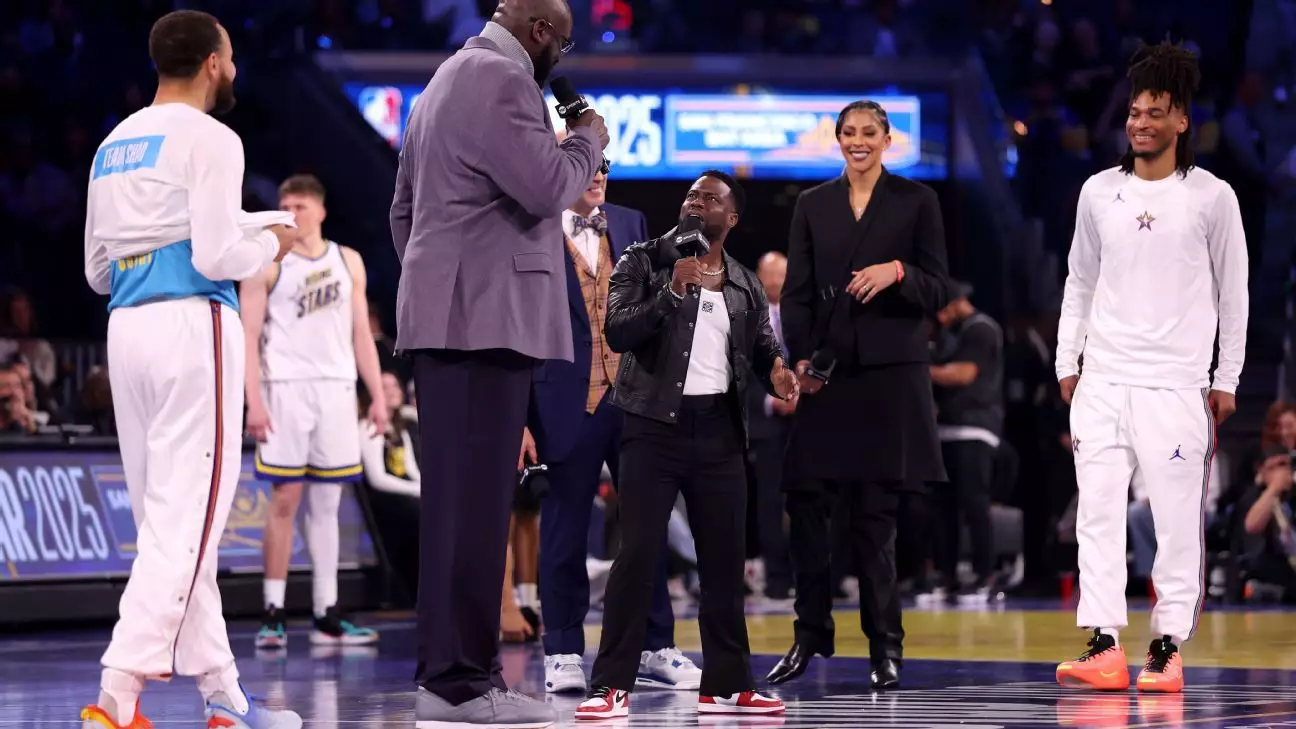The NBA All-Star Game is a highlight of the basketball calendar, showcasing the league’s star players in a competitive yet entertaining atmosphere. However, this year’s event introduced a new tournament format that has sparked diverse reactions among players and fans alike. While the shift aimed to breathe new life into the traditionally lackluster All-Star encounters, the execution raised questions about its effectiveness and its reception among top athletes.
In a break from the time-honored East vs. West face-off, the NBA’s latest All-Star Game embraced a four-team, single-elimination tournament. Each round set a target score of 40 points, a departure designed to create urgency and excitement during the games. Analysts from TNT – Charles Barkley, Kenny Smith, and Shaquille O’Neal – drafted three teams, while the last team came from the Rising Stars event. This ambitious concept aimed to transform the All-Star experience, but players had some reservations concerning the numerous interruptions that overshadowed the gameplay.
While the players acknowledged the spirit of competition on the court, many raised concerns about the excessive breaks that fragmented the flow of the game. Trae Young, a standout for Chuck’s Global Stars, voiced his discomfort with the continuous halting of play, noting, “I didn’t like the breaks. The games were so short.” His sentiment reflects many players who feel that the game’s integrity was compromised in favor of maximizing the television experience.
The breaks were particularly glaring during the championship match, which featured a nearly 20-minute pause for a tribute to the TNT broadcast team—an aspect that did not sit well with several players. Shai Gilgeous-Alexander expressed his desire for a more relentless pace, suggesting that fewer breaks would enhance competitiveness while simultaneously elevating excitement levels. “I had fun, nonetheless,” he added, acknowledging some merit to the format’s structure while hinting at a need for future improvement.
The tournament format sought to inject intensity and excitement into a game often criticized for its lack of defense and engagement. However, the series of interruptions may have hindered that goal. Jaylen Brown, while recognizing that players were still enjoying themselves, pointed out that frequent stoppages detracted from physical play. His remarks highlight a crucial balance that the league should consider—how to create a competitive atmosphere while keeping the entertainment aspects integral to the All-Star Game.
Steph Curry, who emerged as the MVP with a solid performance, acknowledged that change was necessary for the event. His insights indicate a collective desire among players for reform. Curry mentioned having discussions with NBA leadership, hinting at an ongoing dialogue about enhancing the All-Star experience. However, despite the intentions behind the new format, players like Draymond Green criticized the inclusion of first- and second-year stars, expressing nostalgia for the traditional structure where elite players focused on showcasing their best.
The attendance of prominent stars like LeBron James and Giannis Antetokounmpo was sorely missed during this year’s events, detracting from the anticipated spectacle. These absences underline a broader issue concerning player participation and the allure of the All-Star Game. The coordination of star power is critical to the event’s success, and its absence left a noticeable void in the overall excitement.
Moreover, the structure of inviting Rising Stars into the main event has gained scrutiny. While it might cater to a younger audience, veteran players like Green argued that such decisions diminish the exclusivity and prestige associated with the All-Star Game. “My first two years, I didn’t touch that game,” he remarked, emphasizing a sense of history and tradition that the league appears to be distancing itself from.
As the NBA reflects on this year’s All-Star Game format, it must consider player feedback and the overarching goal of the event: to showcase the league’s best talent while ensuring an enjoyable spectacle for fans. The current structure reveals the growing pains of attempting innovation, but player sentiments suggest a longing for the competitiveness that once defined the All-Star experience.
The NBA’s pivot to a new format has provided valuable lessons. While players are open to change, ensuring that the essence of the game remains intact will be critical moving forward. The All-Star Game is indeed a celebration of basketball, and with the right adjustments, it can evolve while still honoring the traditions that have made it a staple of the sport.


Leave a Reply